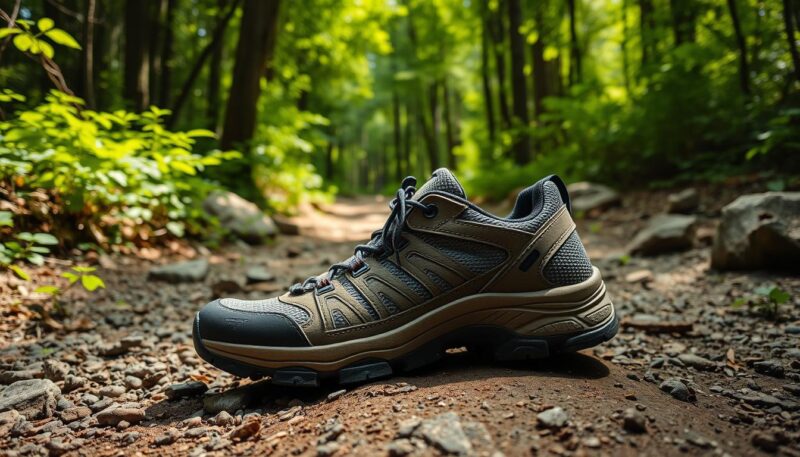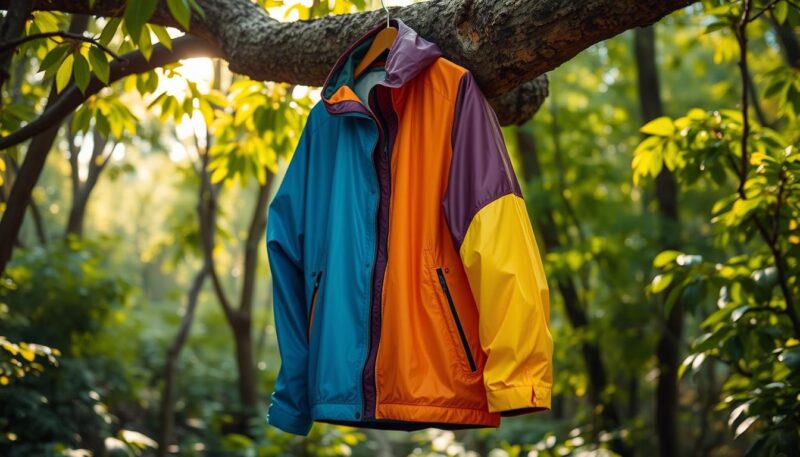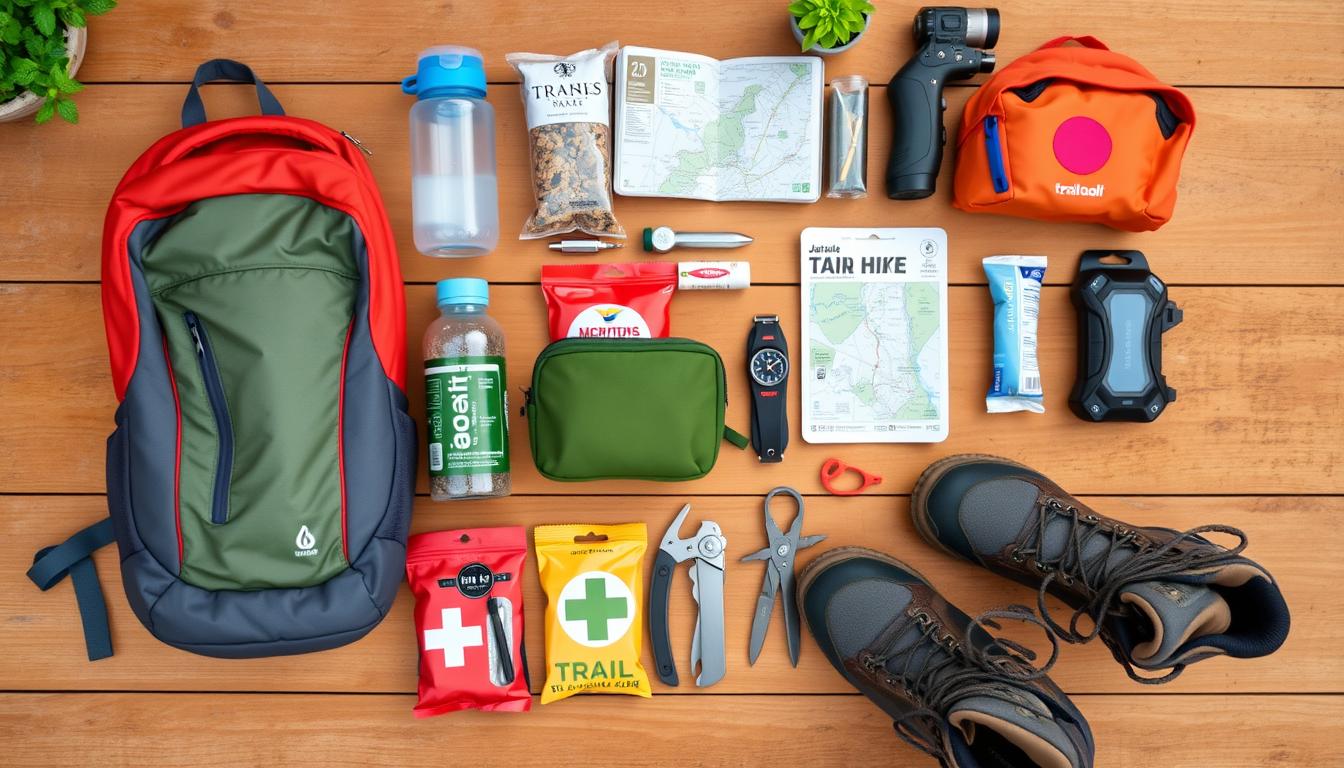Embarking on a day hike offers the unique opportunity to explore nature and access breathtaking locations often hidden away from the beaten path. A well-thought-out day hike packing list, focused on safety and comfort, is the cornerstone of a happy hiking experience. Items such as a dependable backpack like the Osprey Hikelite and a durable water bottle, like the Nalgene Wide Mouth Sustain, are essential. Comfortable clothing suitable for variable weather, reliable hiking shoes or boots, navigation tools like the AllTrails app, snacks to replenish energy, and illumination for unexpected nightfall are all vital components. Factor in a small first aid kit for minor accidents, sun and bug protection to ward off the elements, and an emergency blanket or satellite communicator for unexpected situations, and you’re well on your way to an enjoyable day hike. Remember, the goal is to have everything you might need without overpacking, ensuring a lightweight and fulfilling hiking experience.
Key Takeaways
- Choose a dependable daypack like Osprey Hikelite for your hike.
- Stay hydrated with durable water bottles such as Hydro Flask or Nalgene.
- Wear comfortable, weather-appropriate clothing including hiking shoes and layers.
- Equip yourself with essential navigation tools like the AllTrails app and a compass.
- Prepare for emergencies with a first aid kit and emergency blanket or satellite communicator.
Essential Gear for Day Hikes
Planning a day hike? Ensuring you have the right gear is key to enjoying your adventure safely and comfortably. Let’s dive into the essential gear you need to pack for your day hike to keep you prepared and energized.
Backpack
Every hiker knows the importance of a reliable backpack. An Osprey Daypack, such as the Osprey Hikelite, combines comfort with practicality, offering ample storage for all your essential gear. For those who prefer smaller packs, the Osprey Talon for men and the Tempest for women are popular choices that provide great storage options while remaining lightweight.
Water Bottle vs. Hydration Bladder
Staying hydrated is crucial, and you have two main options: water bottles or hydration bladders. A Hydro Flask water bottle with a leakproof straw is a classic choice for its durability and ease of use. Alternatively, hydration packs, like those offered by CamelBak, provide a hands-free drinking solution, making it easier to stay hydrated on the move.
Trail Snacks and Meals
Maintaining your energy levels throughout your hike is essential. Packing high-energy trail snacks such as granola bars, oat bars, and nuts keeps you fueled. For longer trails, consider more substantial meals like sandwiches or pre-packaged hiking meals to ensure you have enough calories to sustain you through the day.
First Aid Kit
No hiker should leave without a well-stocked first aid kit. Compact options like the Adventure Medical Kits Ultralight/Watertight or the HART Outdoor Day Hike First-Aid Kit are invaluable for addressing minor injuries and emergencies on the trail. Carrying items like bandages, antiseptics, and pain relievers can make a significant difference in keeping you safe during your hike.
Remember, tailoring your packing list to your hike’s specific needs, including the duration and terrain, ensures a more enjoyable and safe adventure. Stay prepared, stay energized, and happy hiking!
Clothing and Footwear
Ensuring you have the right clothing and footwear is essential for a successful day hike. What you wear significantly impacts your comfort, safety, and overall enjoyment of the hike.
Hiking Shoes and Boots
Choosing appropriate hiking shoes or boots is crucial. About 36% of hikers prefer hiking boots such as the Lowa Renegade Hiking Boots due to their superior support and traction. Columbia boots are also a dependable option. Pairing these with high-quality socks from brands like Smartwool, which many hikers recommend packing 2 pairs of for a 3-4 day hike, enhances foot comfort and prevents blisters.

Layering Your Clothing
The key to staying comfortable in varying weather conditions is layering your clothing. Begin with a moisture-wicking base layer like the Icebreaker Sphere II T-Shirt. Add a Patagonia fleece or a lightweight down jacket for insulation. A versatile outer layer, such as a rain jacket, is essential; 65% of hikers rely on it for protection against rain, wind, and hail. Additionally, packing a warm hat is important as 45% of body heat is lost through the head.
Sun Protection and Bug Protection
Sun protection and insect bites are critical concerns for hikers. Seventy percent of hikers consider sunscreen and insect repellent essential items. Use a high SPF sunscreen, wear long sleeves, and consider a wide-brimmed hat or cap for optimal sun protection. Additionally, applying an effective insect repellant can help avoid discomfort from bug bites and potential insect-borne illnesses. Lightweight hiking shirts with built-in sun protection can also provide an extra layer of defense.
In summary, investing in good hiking shoes or Columbia boots, mastering effective layering techniques with items like Patagonia fleece, and prioritizing sun protection can significantly enhance your hiking experience.
Navigation Tools
When setting off on a day hike, having the right navigation tools can make all the difference. Reliable navigation tools such as a high-quality GPS device or a detailed paper map can be lifesavers, especially when venturing into remote areas where trails may not be well-marked.
Among outdoor enthusiasts, the AllTrails app is a popular choice for its comprehensive library of trail maps, which offer offline accessibility. This proves particularly useful in areas with unreliable cell service, ensuring you stay on track even without a signal.
In addition to digital navigation tools, it’s prudent to carry a traditional compass and a print map of the area. Not only do these serve as a fail-safe in case your digital devices fail, but they also provide an opportunity to practice basic orienteering skills, deepening your connection to the environment and encouraging self-reliance.
Taking time to familiarize yourself with your chosen navigation tools can enhance your hiking experience, instilling confidence as you explore new trails. A well-prepared hiker is always ready to tackle unexpected detours, ensuring a safe and enjoyable adventure.
Personal Items and Accessories
When gearing up for a day hike, the right personal items and accessories can elevate your experience, ensuring both safety and comfort. One essential piece is a sturdy  rain jacket. An ultralight rain jacket not only shields you from unexpected downpours but also keeps your packing light and efficient.
rain jacket. An ultralight rain jacket not only shields you from unexpected downpours but also keeps your packing light and efficient.
Accessorizing with a ball cap and sunglasses offers protection against harsh sun rays, a crucial consideration for any hiker. Your ball cap becomes indispensable for blocking the sun, while sunglasses prevent UV damage to your eyes. Additionally, don’t overlook the importance of SPF-rated lip balm and insect repellent to combat sunburn and bug bites.
Smartly chosen personal items, like a forest service or park pass, ensure you’re prepared for accessing restricted areas or encountering backcountry fees. Always carry personal identification and some cash for unforeseen situations. This foresight can make a significant difference in your hiking experience.
When it comes to packing, adhering to the “rule of three” is practical—you shouldn’t carry more than three pieces of the same item. This strategy keeps your load manageable and efficient. Likewise, consider the weight distribution; carrying about one-third of your body weight is advisable, and using ultralight gear can minimize strain on your body.
Efficient packing involves organizing items based on access levels within your backpack. Essential gear should be easily reachable, ensuring you can quickly grab what you need without unpacking your entire bag. Osprey backpacks, like the Talon 22 or Tempest 20, are excellent choices for their design and functionality, perfecting the balance between capacity and comfort.
By including these carefully selected personal items and accessories, you’ll be well-prepared for a safe and enjoyable day on the trails. Balancing these factors ensures a rewarding hiking adventure where every piece of gear counts.
Gadgets and Emergency Gear
When preparing for a day hike, packing essential gadgets and emergency gear can make all the difference in staying safe and comfortable. With the right equipment, you can be better prepared for unforeseen circumstances.
Lighting: Headlamp or Flashlight
Even if you’re only planning a short hike, it’s crucial to bring a reliable lighting device. A bright, lightweight headlamp can provide hands-free illumination, which is especially useful if dusk falls sooner than expected. Whether you opt for a headlamp or a compact flashlight, ensuring you have a dependable source of light is a key component of safe hiking.
Portable Chargers
Staying connected is vital when hiking, particularly if you’re using your smartphone for navigation or emergency contact. Portable chargers ensure your devices remain powered throughout your journey. High-capacity portable chargers are lightweight and can recharge your gadgets multiple times, making them an excellent addition to your hiking gear.
Emergency Blanket and Satellite Communicators
An emergency blanket is a simple yet effective item that provides rapid warmth if conditions turn cold unexpectedly. Pack it for insulation during breaks or emergencies. Additionally, satellite communicators like the Garmin inReach Mini can be lifesavers. The Garmin inReach Mini allows you to send SOS messages or communicate when outside cell service range, offering peace of mind during your adventures.
Incorporate these critical gadgets and emergency gear into your packing list to enhance your safety and preparedness, ensuring a more enjoyable and secure hiking experience.
Day Hike Packing List
Creating a day hike packing list ensures you have all the essentials for a successful and enjoyable outdoor adventure. Tailoring this checklist to match your hike’s specific needs—whether it’s a 5-mile trail or a more strenuous 15-mile trek—can make a significant difference in your experience.
To start, a sturdy backpack is fundamental to carrying your equipment. Choose one with enough space for your items without being overly bulky. Hydration remains a top priority; bringing around 32 ounces of water in a reusable bottle or using a hydration bladder like the Camelbak Rogue is essential. Remember to carry the same amount of water for your pet if they accompany you on the hike.
Fueling your body with high-calorie snacks such as nuts, dried fruit, granola bars, or jerky will keep your energy levels up. The essentials checklist for personal snacks might include:
- Nuts
- Dried fruit
- Granola bars
- Jerky
- Pretzels
Protection against the elements cannot be overlooked. Up to 80% of the sun’s UV rays can penetrate the eyes, so packing sunglasses and sunscreen is a must. Proper hiking attire like Merrell Women’s Moab 2 Ventilator shoes and layered clothing is vital to ensure comfort and adaptability to changing weather conditions.
Your essentials checklist should also include personal hygiene items. Since some trails may lack toilet facilities, carrying a bathroom kit with hand sanitizer and toilet paper is prudent. Additionally, a small first aid kit with bandages, alcohol wipes, over-the-counter painkillers (such as Advil), and tissues for multiple uses can address minor injuries or discomforts.
Navigation aids are invaluable in staying on the right path. Use a GPS device, phone, Apple Watch, or traditional map and compass to keep track of your location and mileage. Lighting tools like a headlamp or flashlight are crucial if your hike extends into the evening.
Lastly, bringing gadgets like portable chargers and emergency gear such as a pocket knife, emergency blanket, and satellite communicator can provide extra safety and convenience. A small tripod is also a great addition if you plan to capture memories along the way.
| Item | Recommendation |
|---|---|
| Hydration | Camelbak Rogue, 85 oz |
| Footwear | Merrell Women’s Moab 2 Ventilator |
| Snacks | Nuts, Dried Fruit, Granola Bars, Jerky |
| First Aid | Bandages, Alcohol Wipes, Advil |
| Navigation | GPS Device, Phone, Apple Watch |
| Emergency Gear | Pocket Knife, Emergency Blanket |
| Personal Items | Sunglasses, Sunscreen, Chapstick |
Consulting gear reviews can help you make informed decisions about the best equipment for your next outdoor excursion. This well-rounded day hike packing list will ensure you have everything you need for a safe and rewarding day on the trails.
Conclusion
As you embark on your journey of day hiking, understanding the balance between packing day hike essentials and keeping your gear lightweight is key. Equipped with a comprehensive gear checklist, you’re prepared to face any outdoor adventure with confidence. Consider the specific requirements of your hike—trail length, weather conditions, and terrain—while tailoring your pack to suit these factors. This level of outdoor preparedness ensures that your time spent enjoying the beauty of nature is both safe and memorable.
Remember, hydration is crucial, with a typical recommendation being one liter of water for every 2 hours of hiking. Don’t forget high-calorie trail snacks to keep your energy levels steady. Selecting the right footwear, whether it’s Keen sandals for short hikes or sturdy hiking boots for longer treks, can make a significant difference in your hiking experience. Always carry a compact first aid kit and identify essential emergency items like a lightweight shelter and identification to prepare for unforeseen circumstances.
Your day hike packing list is more than just a checklist—it’s your gateway to unforgettable and successful hikes. Whether you’re scaling the trails of Mount Kilimanjaro or trekking through local landscapes, packing the right gear and clothing allows you to focus on the experience rather than any logistic hurdles. With the right preparation, you’re all set to venture out, relish the great outdoors, and create countless memorable hikes.
FAQ
What are the essential items to include in a day hike packing list?
Essential items for a day hike packing list include a sturdy backpack like the Osprey Hikelite, hydration solutions such as a Hydro Flask or hydration packs, trail snacks, a first aid kit, navigation tools like the AllTrails app, appropriate clothing and footwear, sun protection, and emergency gear like an emergency blanket or a satellite communicator.
Should I choose a water bottle or a hydration bladder for a day hike?
The choice between a water bottle and a hydration bladder depends on personal preference. A water bottle like the Nalgene Wide Mouth Sustain is durable and easy to clean, while a hydration bladder offers hands-free hydration and can carry more water.
What kind of snacks are best for a day hike?
Ideal snacks for a day hike are those that provide quick energy and are easy to carry. Options include granola bars, oat bars, dried fruits, nuts, and jerky. These trail snacks are lightweight and offer the necessary calories to keep you energized throughout your hike.
What should be included in a first aid kit for a day hike?
A day hike first aid kit should include bandages, antiseptic wipes, adhesive tape, pain relievers, tweezers, and blister treatment. Compact kits like the Adventure Medical Kits Ultralight/Watertight are excellent choices for addressing minor injuries promptly.
What type of clothing should I wear for a day hike?
Wear moisture-wicking clothing, such as the Icebreaker Sphere II T-Shirt, and layer with a lightweight fleece or down jacket for insulation. Select hiking shoes or boots, like those from Columbia or Danner, paired with high-quality socks. Bring a rain jacket and a hat for additional protection against the elements.
How can I ensure reliable navigation on a day hike?
Use navigation tools like a reliable GPS system, the AllTrails app for comprehensive trail maps, and a traditional compass and paper map as backups. Learning basic orienteering skills can further enhance your ability to navigate unfamiliar trails confidently.
What personal items and accessories should I bring on a day hike?
Essential personal items and accessories include a lightweight rain jacket, a ball cap or sunglasses, SPF-rated lip balm, insect repellent, personal identification, and cash. These items contribute to your overall comfort and preparedness on the trail.
What gadgets and emergency gear are recommended for a day hike?
Essential gadgets and emergency gear include a bright headlamp or compact flashlight, portable chargers for electronic devices, an emergency blanket for warmth, and a satellite communicator like the Garmin inReach Mini for off-grid communication. These items ensure safety and readiness for unexpected situations.
How can I create a comprehensive day hike packing list?
Tailor your packing list to the hike’s duration, terrain, and weather conditions. Include all essential gear, hydration solutions, food, appropriate clothing and footwear, personal items, navigation aids, and emergency equipment. Refer to gear reviews to select the most reliable and suitable items for your specific hike.
Source Links
- https://www.switchbacktravel.com/info/day-hiking-checklist
- https://www.erinexploring.com/blog/day-hiking-essentials
- https://www.treesandtents.com/gearguide/essential-gear-day-hikers/
- https://www.cleverhiker.com/hiking/day-hike-checklist/
- https://blackwoodspress.com/blog/day-hiking-gear-list/
- https://www.jadescapades.com/hiking-packing-list/
- https://www.the5kilotraveller.com/blog/post/92066/a-light-hiking-packing-list-for-a-day-or-multi-day-hike/
- https://www.kuhl.com/borninthemountains/hiking-checklist-what-to-bring-on-a-hike?srsltid=AfmBOorOdDjfMagKa1tuIBFQHJ0tgZBZopP-_1kF4oWIFw6IUUPL94ch
- https://thehomebodytourist.com/day-hiking-packing-list/
- https://watchmesee.com/blog/packing-for-long-distance-hiking/
- https://beyondwildplaces.com/overnight-hiking-packing-list/
- https://theadventuresatlas.com/what-to-pack-for-a-day-hike/
- https://www.self.com/gallery/hiking-emergency-kit
- https://hikingguy.com/hiking-gear/modern-hiking-essentials/
- https://canadianadventurecompany.com/day-hiking-gear-checklist-what-to-pack-for-hiking/
- https://www.wta.org/go-outside/trail-smarts/day-hike-packing-list
- https://www.missmollymac.com/post/what-to-pack-for-a-day-hike
- https://amateurtraveler.com/hiking-packing-list/
- https://www.myadventureschool.com/day-hike-checklist/

